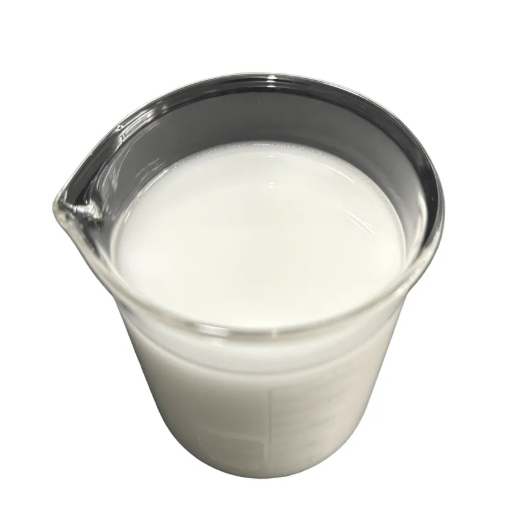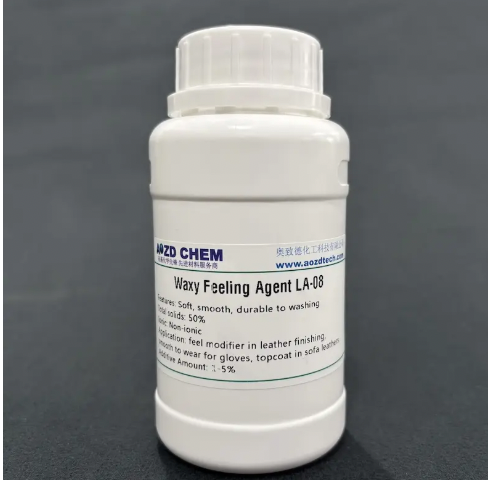When it comes to luxury items, how something feels matters almost as much as how it looks. People tend to link certain textures like softness and that special kind of smoothness with something exclusive and expensive. Think about running fingers over a fancy handbag from a top brand, feeling the quality of a nice watch band, or sitting inside a posh car where everything feels just right. Getting that authentic leather sensation usually boils down to adding a specific treatment to materials. This special stuff called a high end leather feel modifier makes all the difference in creating that rich, luxurious touch customers expect when they pay big bucks for premium products.
A special chemical additive helps improve surface texture, makes materials more flexible, and gives products that nice soft feel people associate with real leather or sometimes better. When working on luxury goods, picking the right kind of modifier isn't just important it's absolutely critical for maintaining that high-end look and feel customers expect. The wrong choice can really hurt how valuable the product seems to buyers. So what factors should manufacturers consider when making this selection? Let's take a closer look at some key considerations.
Understanding What a High-End Leather Feel Modifier Does
Enhancing Sensory Appeal
Leather feel modifiers designed for high end applications work their magic by enhancing the way different materials respond when touched. These treatments stick particularly well on synthetic leathers, those PU coated surfaces we see everywhere now, even on some fabrics. What they do is create this amazing texture that's warm to the hand, has that nice softness but still retains some elasticity similar to what we know as real leather. The difference matters a lot in luxury goods sectors though. People buying expensive items want something that doesn't just look good but actually feels right in their hands too. That connection between touch and satisfaction drives many purchasing decisions in these premium markets after all.
Whether used in fashion, accessories, footwear, or automotive interiors, the right modifier can simulate natural grain structures or deliver ultra-soft velvet effects. In each case, the goal is the same: to communicate quality through sensation.
Improving Surface Behavior and Wearability
Aside from feel, a good modifier also improves the overall surface behavior. It can help reduce friction, enhance flexibility, and prevent cracking or flaking over time. These qualities are essential when dealing with items that are regularly handled, worn, or subjected to bending and movement.
Products treated with a high-end leather feel modifier maintain their finish longer, offering consumers both beauty and durability. In luxury markets, this contributes to long-term brand reputation.
Key Factors to Consider When Selecting a Modifier
Compatibility with Base Materials
Not all modifiers are universally compatible. A high-end leather feel modifier must match the substrate it is used onâbe it polyurethane, PVC, microfiber, or coated fabric. For example, modifiers designed for PU synthetic leather may not adhere properly to PVC, causing finish issues.
Before selecting a product, always test its interaction with your specific material to avoid problems like separation, tackiness, or loss of softness. Some advanced modifiers are formulated to work across multiple base systems, offering flexibility to manufacturers working with varied inputs.
Desired Tactile Effect
What kind of feel do you want your final product to have? Different modifiers offer different tactile outcomes. Some common options include:
Soft and powdery â for a luxurious, suede-like finish
Silky smooth â ideal for high-end handbags or interior trims
Dry and waxy â mimicking aged leather or vintage finishes
Stretchable and rubbery â often used in athletic luxury products
Your target market and product application will dictate which texture is most appropriate. Itâs important to work with modifiers that can deliver highly specific sensory results, especially if you're aiming for brand signature touches.

Performance Requirements for Luxury Goods
Long-Term Stability and Aging Resistance
Luxury items must maintain their integrity over time. The best high-end leather feel modifier will offer excellent thermal and UV stability, helping materials retain their softness and elasticity even after prolonged exposure to light, heat, and humidity.
Testing for aging resistance is essential in product validation. Look for modifiers that pass durability tests such as yellowing, discoloration, or loss of softness over months or even years.
Scratch Resistance and Cleanability
In premium leather alternatives, the surface must not only feel great but also remain pristine through regular use. A high-performance high-end leather feel modifier should offer a delicate balance between softness and surface toughness.
In automotive interiors, for example, surfaces must withstand friction from clothing or accessories without scuffing. Similarly, handbags or shoes must be resistant to oils, sweat, or minor abrasions. Advanced formulations are often developed with these dual priorities in mindâfeel and function.
Environmental and Regulatory Considerations
Compliance with Safety Standards
Luxury brands often operate under strict global regulations concerning the safety of materials. A good high-end leather feel modifier should comply with REACH, RoHS, and other regional standards for chemical safety.
Particularly in products that may contact skin (like wallets, watch straps, or apparel), choosing non-toxic, low-VOC, and phthalate-free formulations is not just good practiceâitâs mandatory for certain markets.
Biodegradable and Sustainable Options
As sustainability becomes a selling point in luxury, more brands are seeking modifiers that offer eco-friendly benefits. New-generation high-end leather feel modifiers are being designed with biodegradable polymers or renewable raw materials to reduce environmental impact.
If your brand has strong sustainability commitments, working with suppliers that offer green options can strengthen your environmental story and appeal to conscious consumers.
Application Techniques and Process Efficiency
Coating Uniformity and Ease of Use
Application matters. Whether you use roll coating, spray, or dip methods, the modifier must be easy to handle and produce consistent results. Uneven finishes, bubbles, or settling can all ruin the feel and appearance of luxury surfaces.
Many modern high-end leather feel modifiers come in ready-to-use emulsions or dispersions that require minimal preparation and offer excellent leveling properties. This reduces processing time and labor costs while ensuring consistent batch quality.
Blending with Other Additives
Some modifiers are designed to be standalone, while others can be blended with matting agents, crosslinkers, or colorants to achieve custom finishes. Depending on your production workflow, you may want a product that integrates seamlessly with your current system.
Consult with your raw material suppliers about compatibility and test for side effects like viscosity changes or gloss variation during blending.
Conclusion â A Strategic Choice for Tactile Excellence
Choosing a high-end leather feel modifier is more than just selecting a chemicalâitâs an investment in the emotional quality of your luxury product. Whether you're targeting the fashion, footwear, automotive, or interior design sectors, the way your product feels will influence customer perception and brand loyalty.
From substrate compatibility and tactile effect to environmental safety and processing ease, there are many variables to consider. The right high-end leather feel modifier should not only enhance the end-user experience but also align with your brandâs performance goals and production capabilities.
Ultimately, what separates ordinary from extraordinary in the luxury world is attention to detailâand the right modifier is a small detail that makes a significant difference.
FAQ
Can I use the same high-end leather feel modifier on PU and PVC?
Not always. Many modifiers are substrate-specific. Always check compatibility with your base material before full-scale application.
Will the modifier affect color or gloss?
It may slightly influence gloss or visual texture, depending on formulation. Always test small batches with your chosen topcoat.
Are these modifiers safe for skin-contact products?
Yes, as long as you select non-toxic, REACH-compliant versions. Many are formulated specifically for skin-safe use.
How do I maintain softness after repeated cleaning?
Choose modifiers with high resistance to detergent, water, and abrasion. A well-formulated high-end leather feel modifier will retain its effect after multiple wipes or washes.

